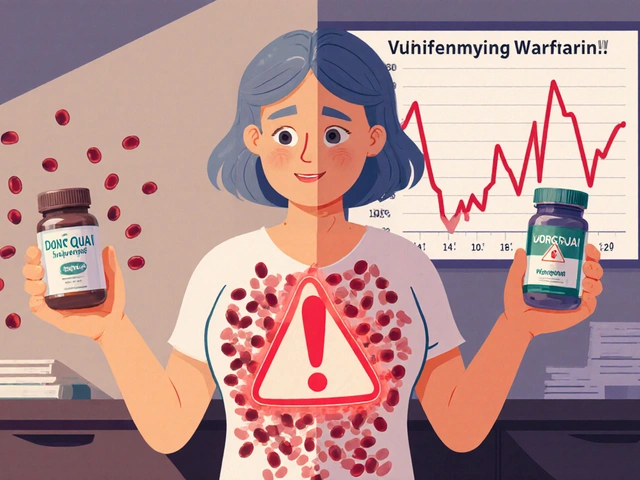For millions of people, asthma isn’t just a cough or a wheeze-it’s a constant balancing act. One missed inhaler, a walk through pollen-heavy air, or a cold that won’t quit can turn a calm day into a panic. But here’s the truth: asthma control isn’t about avoiding symptoms entirely. It’s about knowing exactly what to do, when to do it, and how to stay in charge-no matter what life throws at you.
Why Your Inhaler Isn’t Working (And What to Do About It)
If you’ve been using your inhaler for years but still feel short of breath, you’re not alone. The problem isn’t always your lungs. It’s how you’re using the device. Most people get the basics right: shake it, breathe out, press the canister, inhale. But the details? That’s where things fall apart. For metered-dose inhalers (MDIs), failing to shake the device before use means you’re getting uneven doses-sometimes none at all. Dry powder inhalers (DPIs) need a fast, deep breath to pull the medicine into your lungs. If you inhale too slowly, the powder sticks in your throat and never reaches your airways. The 2025 VA/DOD guidelines say: assess inhaler technique at every visit. That means your doctor should watch you use it, not just ask if you know how. Common mistakes include:- Not holding your breath for 5-10 seconds after inhaling
- Not using a spacer with MDIs (especially for kids or older adults)
- Pressing the inhaler too early or too late during inhalation
- Not rinsing your mouth after corticosteroid inhalers, leading to thrush
The Big Shift: Why SABA-Only Treatment Is Out
For decades, if you had asthma, your doctor gave you a blue inhaler-albuterol, salbutamol, whatever you call it. A quick puff when you felt tight, and you were good to go. That’s over. Since 2019, the Global Initiative for Asthma (GINA) has been clear: never use a short-acting beta-agonist (SABA) alone. And by 2025, every major guideline-GINA, VA/DOD, NENC-agrees. SABA-only treatment increases your risk of a life-threatening attack. Studies show patients relying only on rescue inhalers are five times more likely to be hospitalized. The new standard? ICS-containing medication for everyone. Even if you only have symptoms once a month. Inhaled corticosteroids (ICS) reduce inflammation-the root cause of asthma-before it starts. The 2024 GINA update made this official: all adults and adolescents with asthma must use an ICS-containing regimen. The best option for most people? A combo inhaler with ICS and formoterol. Formoterol works fast-like a rescue inhaler-but it’s paired with ICS, so every puff also treats inflammation. You use it only when needed, not daily. This approach cuts severe attacks by up to 60% compared to SABA-only use. If you’re still on a blue inhaler alone, talk to your provider. You’re not being treated properly.
What’s Triggering Your Asthma? (Hint: It’s Not Just Allergens)
You know pollen and dust mites are triggers. But what about:- Laundry detergent? Fragrances in fabric softeners can irritate airways.
- Strong perfume or cleaning sprays? Even a whiff can cause a flare-up.
- Weather changes? Cold air, humidity spikes, or sudden drops in pressure are common culprits.
- Exercise? It’s not the activity-it’s breathing dry air through your mouth. A pre-workout puff with your ICS/formoterol inhaler helps.
- Stress? Anxiety can tighten airways and make you hyperventilate, mimicking an asthma attack.
- GERD? Acid reflux can trigger asthma even if you don’t feel heartburn.
Long-Term Management: It’s Not Just Medication
Asthma control isn’t a one-time fix. It’s a daily routine. The goal? No daytime symptoms, no nighttime waking, no rescue inhaler use more than twice a week, and no activity limits. The Asthma Control Test (ACT) is a simple 5-question tool doctors use to measure this. Answer honestly:- How often has your asthma kept you from normal activities?
- How often have you had shortness of breath?
- How often have you woken up because of asthma?
- How often have you used your rescue inhaler?
- How would you rate your asthma control overall?
- Which meds to take daily
- When to increase meds if symptoms worsen
- When to call your doctor
- When to go to the ER
What to Do If You’re Still Struggling
If you’re doing everything right-taking meds, avoiding triggers, using your inhaler correctly-but still having flare-ups, it’s time to look deeper. Check for comorbidities. About 60% of people with asthma also have chronic rhinosinusitis. Treating your sinuses can improve lung function. Obesity? Losing even 5-10% of body weight reduces asthma symptoms significantly. Pregnancy? Asthma control during pregnancy protects both you and your baby. Also, review your meds. Are you on a low-dose ICS? Maybe you need medium. Are you using a generic inhaler with lower potency? Some brands deliver more medicine per puff. Ask your pharmacist: “Is this the most effective dose for my inhaler?” And don’t ignore mental health. Anxiety and asthma feed each other. If you’re constantly worried about your next attack, talk to someone. Cognitive behavioral therapy (CBT) has been shown to reduce asthma symptoms by improving how you respond to breathing trouble.What’s Next? The Future of Asthma Care
The field is moving fast. In 2025, we’re seeing:- More use of biomarkers (blood tests, FeNO) to guide treatment
- Smart inhalers that track usage and send reminders to your phone
- Telehealth check-ins replacing some in-person visits
- Guidelines pushing toward completely SABA-free care
Can I stop using my inhaler if I feel fine?
No. Even if you feel fine, asthma inflammation is still there. Stopping controller medication like ICS can lead to a sudden, dangerous flare-up. Guidelines recommend stepping down doses slowly and only under medical supervision-not stopping entirely. Always talk to your doctor before making changes.
Is it safe to use my rescue inhaler every day?
Using a rescue inhaler more than twice a week means your asthma isn’t controlled. Relying on it daily increases your risk of severe attacks and death. If you’re using it often, you need a controller medication-like an ICS-formoterol combo-to treat the underlying inflammation. Talk to your provider immediately.
Do I need to use a spacer with my inhaler?
If you’re using a metered-dose inhaler (MDI), yes-especially if you’re a child, older adult, or have trouble coordinating your breath. Spacers help deliver more medicine to your lungs and less to your mouth and throat. They’re simple, inexpensive, and often covered by insurance. Ask your pharmacist for one.
Can asthma be cured?
There’s no cure for asthma, but it can be fully controlled. Many people live symptom-free for years with the right treatment plan. Some children outgrow it, but for adults, ongoing management is key. The goal isn’t to eliminate asthma-it’s to live without it limiting your life.
What’s the best way to track my asthma symptoms?
Use the Asthma Control Test (ACT) every 4-6 weeks. Also keep a daily log: note symptoms, triggers, medication use, and sleep quality. Many apps (like MyTherapy or AsthmaMD) can help. Share this with your doctor at every visit-it’s the best way to adjust your plan before things get worse.
If you’re managing asthma well, celebrate it. You’re doing something most people never learn to do: taking control of a chronic condition with precision, patience, and persistence. Keep going.







Comments(12)